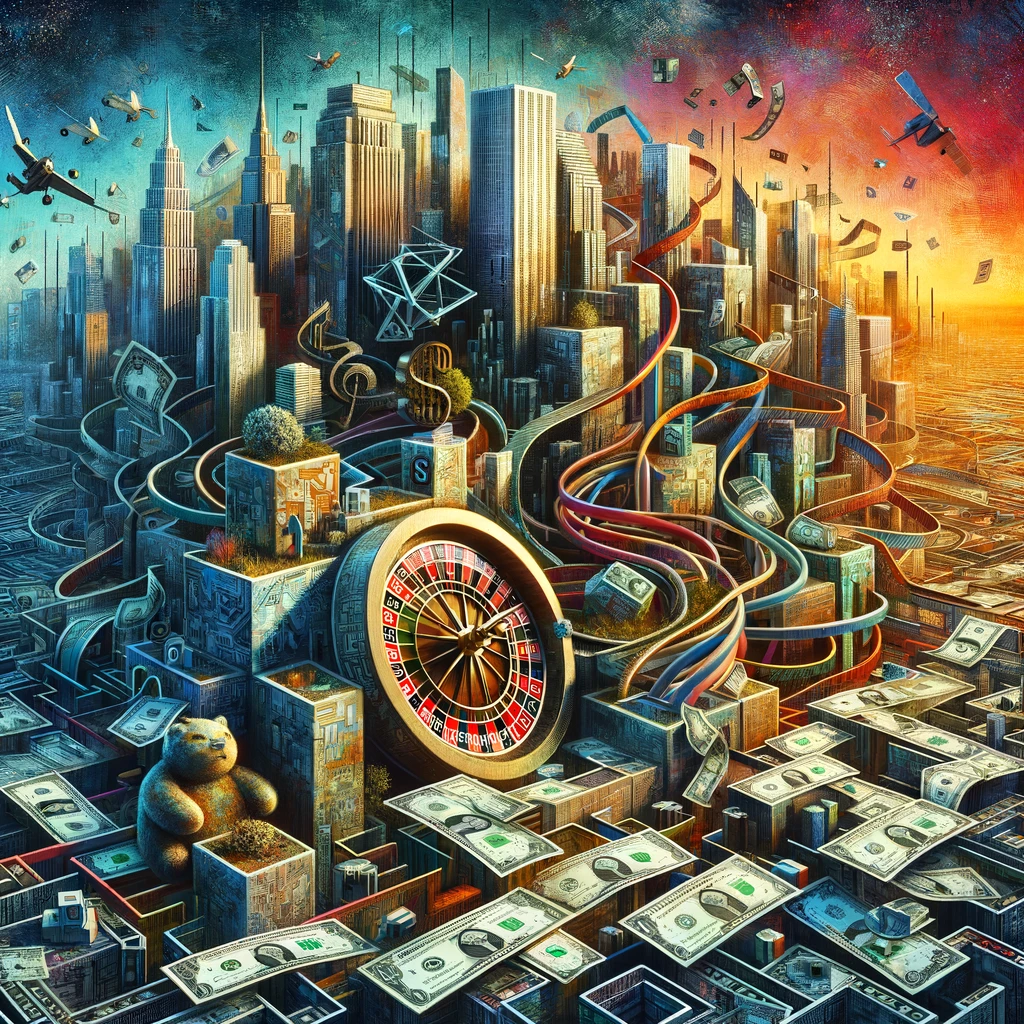America is like that one friend who, despite consuming a diet consisting mainly of processed sugar and fast food, somehow remains inexplicably in shape. So, interest rates in the U.S. have hovered above 5% for close to a year now. Logic dictates that this should have some visible impact—slowing down the service industry, perhaps, or making the job market twitch. Yet, here we are, witnessing an economy that, on paper, seems invincible, untouched by the equivalent of a high cholesterol warning.
A Dance with Dollars
To make sense of America’s senseless economy, here is Dario Perkins, a strategist with some serious cred. This guy, like me, wonders why the anticipated economic apocalypse, courtesy of rising interest rates, still hasn’t materialized. Imagine, if you will, the collective nail-biting session back in 2022. Central banks decided to crank up the rates in what was one of the boldest monetary tightening acts we’ve ever seen. And yet, the financial doomsday clock is yet to strike midnight.
Nothing’s broken.
No cracks in the economic foundation.
It’s almost as if the Federal Reserve has pulled a fast one on us, or perhaps, we just overestimated the fragility of America’s economic system.
The central bank’s mantra has always been that interest rate impacts take their sweet time, with “long and variable lags.” I don’t know, guys, perhaps this economic fortitude isn’t all that mysterious. It might simply be a case of delayed reaction — kinda like waiting for that morning coffee to kick in. Still, Perkins isn’t buying it wholesale. He turns our attention to the “monetary transmission mechanism.”
And this is where things get particularly interesting. There are theories going around, some of which are as amusing as they are baffling, suggesting that maybe, just maybe, monetary policy isn’t the puppet master of the global economy we thought it was. Perkins, however, isn’t ready to dismiss the traditional wisdom that high interest rates should, in theory, make things like borrowing for a new house or car significantly less appealing.
The evidence is in plain sight. Right? Americans are changing their tune when it comes to spending and saving, as if they are pirates at sea, influenced by the interest rate’s siren song.
The Twisted Paths of Money Flow
Let me break down the Federal Reserve’s little strategy into something digestible. It boils down to two main paths. The “intertemporal substitution” channel and the “income effects” channel. The former is all about influencing decisions on whether to save or splurge, which, given the current interest rates, has led to a noticeable shift. Financing big-ticket items has become nearly impossible compared to just five years ago. On the other hand, the allure of higher returns on cash savings has people flocking to money-market funds like seagulls to a beach picnic.
Now the “income effects” angle is equally fascinating. Higher rates should ideally put more money in lenders’ pockets and less in borrowers’, which, by the laws of economic gravity, should reduce spending and slow growth. Right?
Wrong!
Thanks to a mix of government policies and a pandemic-triggered fiscal cushion that’s kept consumer spending from nosediving.
Interestingly, amidst all this, household incomes have managed to hold their ground. This resilience can be chalked up to a combination of strategic rate-locking by businesses and consumers during the low-interest days of 2020 and 2021, and all the government policies aimed at keeping America’s economy steady.
So, where does all this leave us?
I’m actually not sure.





